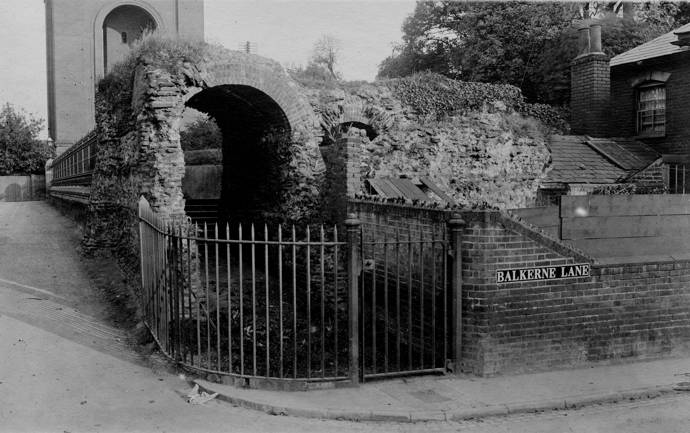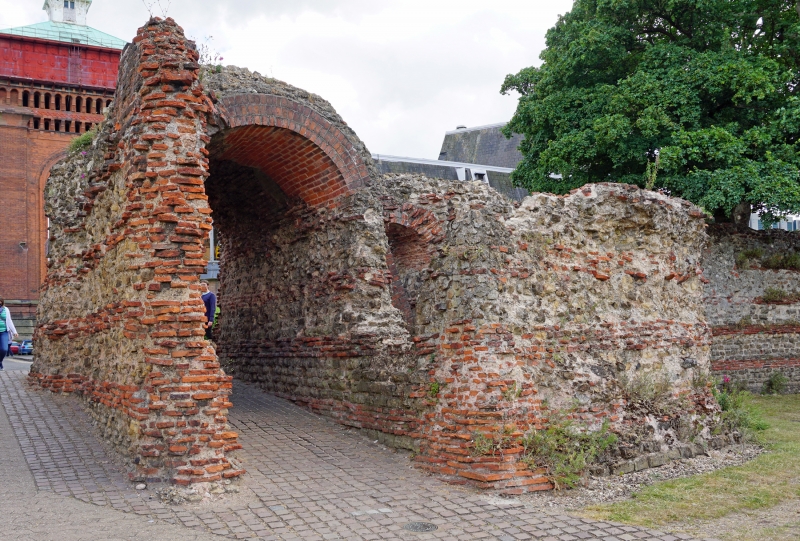The Balkerne Gate, located in Colchester (the ancient Roman town of Camulodunum), is a striking example of Roman architecture and engineering. Dating back to the 2nd century AD, this monumental gateway is the largest surviving Roman gateway in Britain. Its location at the intersection of the Roman road from Londinium (modern London) with the town wall of Camulodunum highlights its strategic significance in controlling access to the city.
A Unique Design
One of the most remarkable features of the Balkerne Gate is its design. Unlike most Roman gates, which typically featured one or two entrances, the Balkerne Gate boasts four entrances. This uncommon design not only emphasizes the gate’s importance but also reflects the advanced engineering techniques of the Romans. The structure’s unusually wide carriageways—each measuring 17 feet in width—are flanked by footways approximately 6 feet wide. This layout allowed for the smooth and efficient passage of both vehicles and pedestrians, facilitating trade, military movement, and communication within the Roman Empire.

A Strategic Entry Point
The strategic positioning of the Balkerne Gate played a critical role in the defense and growth of Camulodunum. As the gate marked the intersection of major Roman roads, it was a key point for controlling traffic into the city. Camulodunum, being one of the first Roman settlements in Britain and later becoming the capital of Roman Britain, required a secure and functional gateway to manage the movement of people and goods. The gate’s design, with its wide access points, catered to the needs of both military operations and civilian activity, showcasing the Romans’ sophisticated urban planning.

Architectural Significance
In addition to its functional role, the Balkerne Gate holds architectural significance. Part of the city’s defensive town walls, the gate was integral to the fortification of Camulodunum. The city’s walls, with the gate serving as a key entry point, underline the importance of security in Roman Britain, particularly in the early phases of Roman occupation. The gate’s robust design reflects the Roman emphasis on fortifications to protect against potential invasions and uprisings.

A Testament to Roman Engineering
Today, the Balkerne Gate stands as the largest and most well-preserved Roman gateway in Britain, offering a glimpse into the advanced engineering and architectural expertise of the Romans. Its size, design, and historical importance have made it a key symbol of Colchester’s Roman heritage. The gate serves not only as an impressive relic of Roman Britain but also as a reminder of the legacy of Roman engineering, urban planning, and military strategy.
Conclusion
The Balkerne Gate in Colchester remains one of the most significant Roman structures in Britain. Its unique design, strategic importance, and architectural grandeur make it a testament to the Romans’ mastery of engineering and their ability to build cities that catered to both practical needs and symbolic power. As a key part of the town’s defensive walls and an important entry point into the Roman city of Camulodunum, the Balkerne Gate continues to captivate historians, archaeologists, and visitors alike, serving as a reminder of Britain’s rich Roman heritage.

